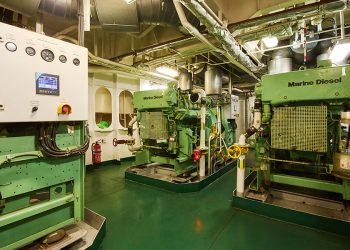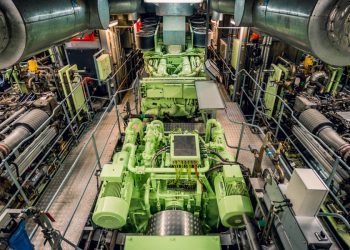Collisions, contacts and groundings are some of the most usual maritime accidents. There are many factors which may lead to them, such as failures at vessel’s main systems. In the previous articles, we experienced failures at vessel’s main engine and steering. At this point is critical to analyze what happens in the case of power failure.
A power failure occurs when the generation or distribution of power is dysfunctional resulting in blackout.
Main causes of power failure
- Human error
- Electrical failure due to overload or as a result of starting bow thrusters and deck machinery
- Automation Failure
- Lack of fuel, due to blocked filters or shortage of fuel supply to the engine
- Mechanical Failure, due to overheating, loss of lubrication, etc.
Real life accident
A bulk carrier was approaching a lock entrance with Master and helmsman on the Bridge. Master instructed the OOW to go on deck in preparation for the lock transit. As they approached the lock outer piers, at a speed of about nine knots, Master called the engine room requesting the bow thruster. Once the power to the bow thruster was transferred to the bridge, it ran for approximately one minute without being used, at which point its circuit breaker tripped.
The circuit breaker was reset and closed by ER staff and the bow thruster restarted; the voltage in the electric distribution system dropped and the No.3 generator main circuit breaker tripped. However, the No.1 generator continued powering the main switchboard. The main engine continued to operate. The drop-in voltage set off a number of power failure alarms on the bridge, including both gyrocompasses. The radars defaulted to standby mode and two of the three rudder angle indicators on the bridge were disabled.
The Master put the engine astern and initiated a starboard turn to abort entry to the lock canal entrance. For five minutes, while engine room staff repeatedly undertook the blackout procedure, the power failure alarms on the bridge sounded three more times following their initial activation. The second officer arrived on the bridge and began silencing and resetting the alarms, as per the Master’s orders. Master was monitoring the vessel’s turn on the Electronic Chart Precise Integrated Navigation System (ECPINS), but without confirming through visual navigation.
After a few minutes, Master looked outside and saw that the shoreline was on the vessel’s port side, instead of on its stern. The hull touched bottom and the vessel ran aground 1.5nm southeast of the lock outer piers. The official report found, among other things that a number of power failure alarms on the bridge created a situation that resembled a blackout.
Actions to be taken
- Check for navigational hazards or other vessels in the vicinity
- Exhibit NUC lights/ shapes and use sound signals
- Inform Master on the situation
- Contact Engine Room
- Select emergency power supplies for bridge and navigational equipment
- Check for damages on vessel’s systems which caused the breakdown
- Prepare for anchoring if water depth is suitable
- Inform stakeholders
SQE Marine has prepared a detailed checklist aiming to provide the necessary steps required, in case of power failure.





















































































